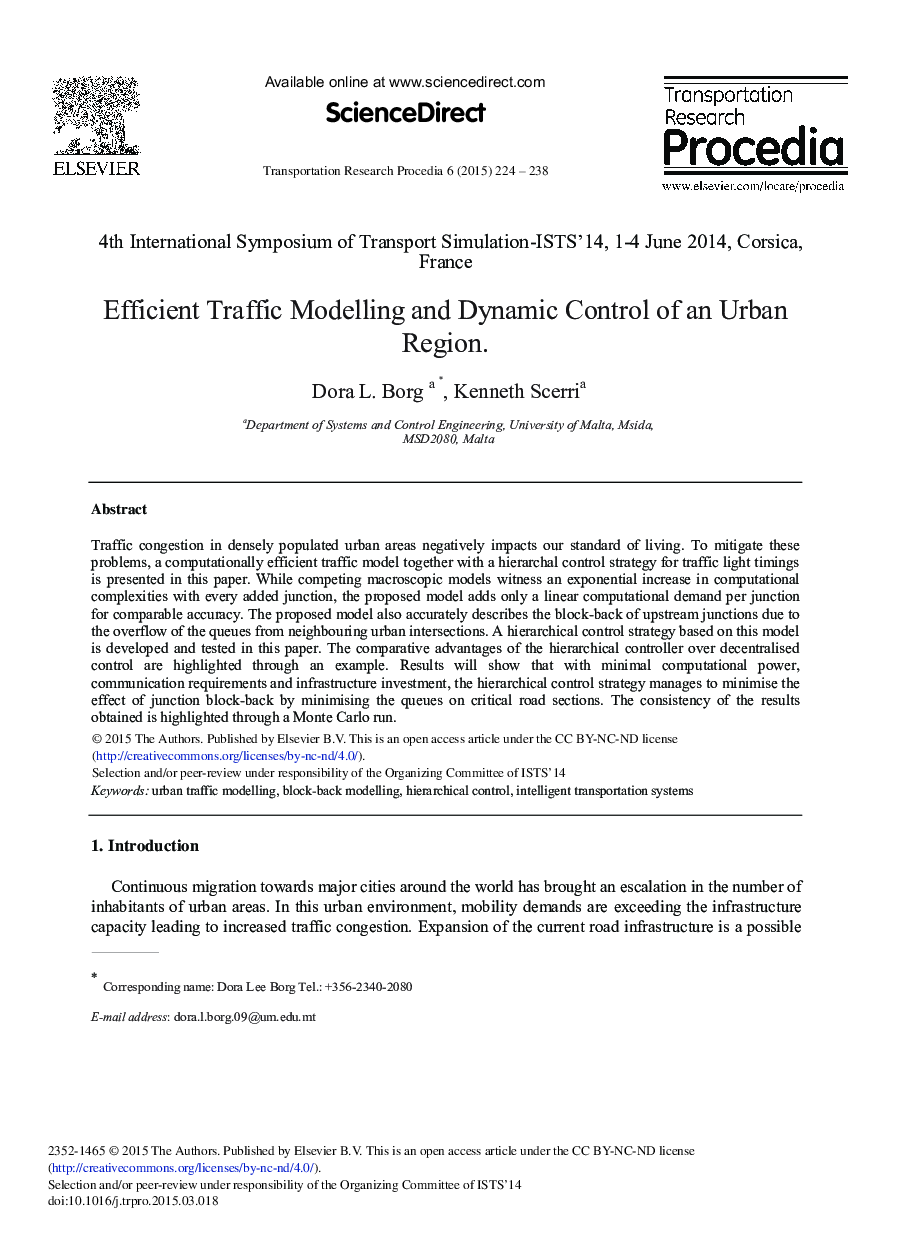| Article ID | Journal | Published Year | Pages | File Type |
|---|---|---|---|---|
| 1106555 | Transportation Research Procedia | 2015 | 15 Pages |
Traffic congestion in densely populated urban areas negatively impacts our standard of living. To mitigate these problems, a computationally efficient traffic model together with a hierarchal control strategy for traffic light timings is presented in this paper. While competing macroscopic models witness an exponential increase in computational complexities with every added junction, the proposed model adds only a linear computational demand per junction for comparable accuracy. The proposed model also accurately describes the block-back of upstream junctions due to the overflow of the queues from neighbouring urban intersections. A hierarchical control strategy based on this model is developed and tested in this paper. The comparative advantages of the hierarchical controller over decentralised control are highlighted through an example. Results will show that with minimal computational power, communication requirements and infrastructure investment, the hierarchical control strategy manages to minimise the effect of junction block-back by minimising the queues on critical road sections. The consistency of the results obtained is highlighted through a Monte Carlo run.
